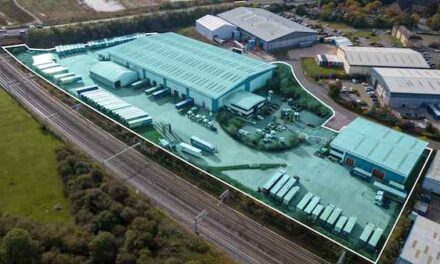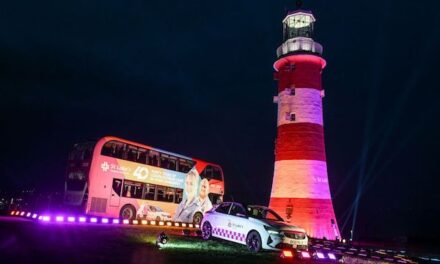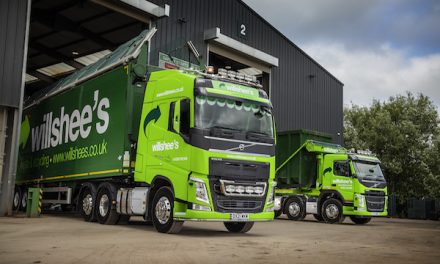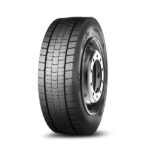Necessity drives innovation and companies must step up to make significant progress in their sustainability goals. Royal Mail leads the sustainability conversation in the delivery and order fulfillment industry by introducing its modern electric delivery vehicle fleet. Discover how the service provider uses electric vehicles to make headway in its carbon reduction quest.
Race to Net-Zero Royal Mail Vehicle Emissions
Royal Mail (RM) is gearing up to reach its net zero goals by 2040 by switching from fuel-powered vans to electric delivery vehicles. The transition aims to solidify Royal Mail’s commitment to delivering world-class postal services while meeting stricter emissions standards.
Reaching net-zero emissions is an ambitious goal for any company, especially for an organization that relies on vehicles to extend its services to the growing demand of customers. To further increase the sustainability challenge, 70% of Royal Mail vehicle emissions come from its massive transport fleet. While Royal Mail was once a letters-led company, it pivoted to a parcels-led approach to cater to the increasingly growing delivery needs of online shoppers and package senders.
Royal Mail has over 5,500 EVs in its delivery fleet — a sizeable portion of its 43,000 service vehicles. The delivery company’s EV fleet delivers mail and packages in low-emission zones around the UK including London, Glasgow, Bristol, Oxford and Cambridge. The electric delivery fleet will hopefully enable RM to make good on its pledge to reduce carbon emissions significantly.
RM’s electrification of its delivery fleet is but one aspect of its four-pillar plan to combat climate change and create a more proactive sustainable business environment. Its other four ambitious targets are:
- Net-zero deliveries: The first part of the company’s sustainability drive is to reach zero carbon emissions for its final-mile deliveries using its growing EV delivery fleet.
- Net-zero operations: Understanding the environmental impact of its business, the service provider aims to re-design its delivery network using low-carbon transportation and maximizing its facilities’ energy efficiency where possible.
- Making circular happen: Delivery services use disposable materials for order fulfillment and other functions. RM aims to transform its operations by embracing a circular business approach involving waste reduction and designing sustainable customer products and services.
- Collaborating for action: The service provider plans to become a leading figure in the delivery industry by optimizing its supply chain, delivery methods and workforce and building partnerships to raise sustainability standards and shorten electric vehicle delivery times for manufacturers.
Switching to Electric Delivery Vehicles for Order Fulfillment
Reducing Royal Mail vehicle emissions is critical to achieving its net-zero goals. The bulk of the company’s carbon emissions come from its delivery fleet, making the switch to electric delivery vehicles a sound move.
The company is also making strides in vehicle maintenance by taking a proactive approach instead of a reactive one. RM ensures optimum performance and efficiency of its electric delivery vehicle fleet by following a rigorous preventative maintenance schedule to eliminate delays that can cost the company significant productivity losses.
RM also deployed various processes to support its action plans. The Steps to Zero plan utilizes on-foot delivery to reduce carbon emissions further and improve delivery services to residents across the UK. The service provider’s 85,000-strong workforce of local postal workers is eager to contribute to reducing air and noise pollution by supplementing their electric delivery vehicles with on-foot final-mile deliveries.
The service provider’s choice of switching to EVs and alternative delivery methods is already paying off. Royal Mail offers the lowest reported CO2 emissions per parcel delivered among major delivery operators in the UK. The service provider was also cited as one of the most carbon-conscious delivery companies in 2021. Royal Mail is also trying to move away from its reliance on domestic flights and will depend on railway deliveries to strengthen its process optimization and carbon reduction procedures.
Establishing an Energy-Efficient Delivery Hub
To drive sustainability goals further, Royal Mail has also improved its facilities with eco-friendly measures in mind. In a move to offset its carbon footprint from the past, RM launched its second parcel hub in Midland in June 2023. Capable of processing over one million parcels daily, the facility spans 840,000 square feet and uses various energy efficiency and natural resource conservation technologies.
The carbon-neutral facility received an ‘excellent’ certification from the prestigious BREEAM assessment method that grades infrastructure and buildings based on multiple sustainability standards. RM’s Midland parcel hub uses energy-efficient heating and ventilation systems to keep operational costs low while reducing carbon emissions. Its roof design also allows natural light to drive down electricity costs further.
Other sustainable features of the Midland parcel hub include extensive solar panels that generate up to 900Mwh of clean electricity and a rainwater harvesting system that collects water for non-potable uses like flushing toilets. The delivery hub also uses state-of-the-art automatic parcel sorting technology that reduces processing and delivery time. These improvements align with Royal Mail’s commitment to delivering quality service while reducing carbon emissions wherever possible.
Reducing Carbon Emissions One Parcel at a Time
Simon Thompson, CEO of Royal Mail, called the environment the next battleground for businesses — and RM is ready to lad. The organization has made a commitment to leaving a lasting positive impact on the environment and the communities they serve. By introducing electric delivery vehicles to their fleet, the UK’s prominent postal service provider is reducing carbon emissions one parcel at a time.








